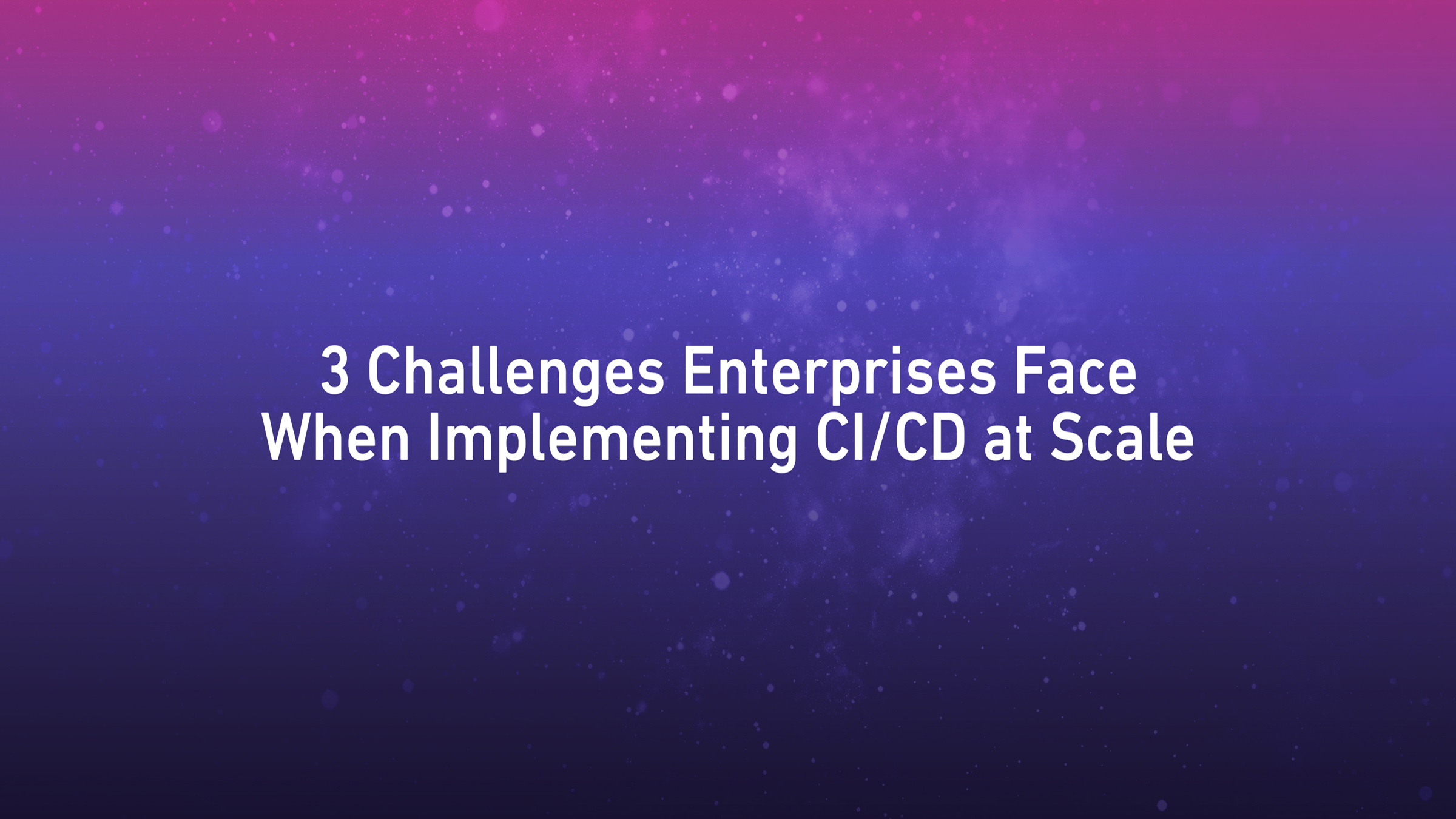Technology leaders planning and implementing CI/CD in enterprise environments are faced with a unique set of challenges centered around complexity, scalability, and performance. It's difficult to keep track of the myriad options available for each tool in the CI/CD process, let alone integrate and optimize them. Here's three of the top challenges your company might face when implementing CI/CD at scale.
Administering Each Service is Time-Consuming
Installing, maintaining, and upgrading each service in the CI/CD process is time-consuming, especially when dealing with multiple hardware and software configurations. The problem is compounded in an environment where many teams choose to work with their favorite technologies, configurations, and tools.
The result is that DevOps teams are responsible for spinning up a new CD pipeline for each team and application. This leads to low resource utilization as teams function as silos of developers—each siloed team running its own instance of every tool. Poor resource allocation may prevent developers from shipping code quickly and increase hardware and licensing costs unnecessarily.
Every CI/CD Tool has its Own Challenges
In addition to the challenges presented by running multiple CI/CD toolchains across multiple teams, each component of the CI/CD toolchain presents its own unique set of challenges. In general, CI/CD tools tend to be a bit quirky to administer because each has its own complex web of dependencies, and many rely on plug-in architectures that are not well-suited to delivering reliable performance at scale.
In general, CI/CD tools tend to be a bit quirky to administer because each has its own complex web of dependencies, and many rely on plug-in architectures that are not well-suited to delivering reliable performance at scale.
Jenkins is Complex and Hard to Scale
The build automation tool, Jenkins, is a great example of the complexities involved in administering CI/ CD tools. Jenkins is an important tool to examine because it is widely implemented by DevOps teams. Jenkins relies on a master/slave architecture, with the master handling scheduling and the slaves running workers to execute individual build jobs. Most Jenkins scaling involves manual processes like adding more masters or slaves, partitioning build jobs, and other traditional performance-tuning tasks.
However, multiple teams and programming languages increase the number and complexity of build agents. DevOps teams must plan carefully and avoid the temptation to load extraneous plug-ins in order to preserve build performance.
A significant challenge is pipeline sprawl, where multiple pipelines are building against multiple languages/libraries and multiple test scenarios. The converse of pipeline sprawl is to have a single, monstrously complex pipeline that processes everything, and as a result gets slower and slower over time.
Jenkins' master/slave architecture is difficult to run in a high-availability configuration at scale. Too many enterprises rely on a single master while manually partitioning build agents across many slaves. Should that master Jenkins node crash, teams may face lengthy disruptions that bring development efforts to a complete halt, not exactly the desired outcome of DevOps programs.



